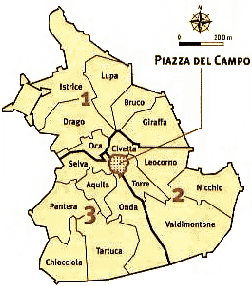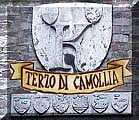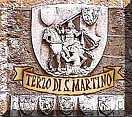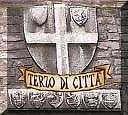Contrade of Siena
A contrada (plural: contrade) is a district, or a ward, within an Italian city.
The most well-known contrade are probably the 17 that race in the Palio di Siena - each named after an animal or symbol and each with its own long history and complicated set of heraldic and semi-mythological associations.

The contrade of Siena
These districts were set up in the Middle Ages in order to supply troops to the many military companies that were hired to defend Siena as it fought to defend its independence from Florence and other nearby city states. As time has gone by, however, the contrade have lost their administrative and military functions and have instead become simply areas of localised patriotism, held together by the emotions and sense of civic pride of the residents. Their roles have broadened so that every important event - baptisms, deaths, marriages, church holidays, victories at the Palio, even wine or food festivals - is celebrated only within one's own contrada.
Every contrada has its own museum, fountain and baptismal font, motto, twin city, allied contrade (only Oca has no traditional allies) and enemy contrade (only four - Bruco, Drago, Giraffa and Selva - have no declared enemies).
There were originally 59 contrade, but consolidation over the centuries has seen the number reduced to today's 17.
 | Le Contrade del Terzo di Kamollia |
 BRUCO |
 GIRAFFA |
 DRAGO |
 ISTRICE |
 LUPA |
 OCA |
 | Le Contrade del Terzo di S.Martino |
 CIVETTA |
 LEOCORNO |
 NICCHIO |
 TORRE |
 VALDIMONTONE |
 | Le Contrade del Terzo di Cittа |
 TARTUCA |
 ONDA |
 CHIOCCIOLA |
 PANTERA |
 SELVA |
 AQUILA |